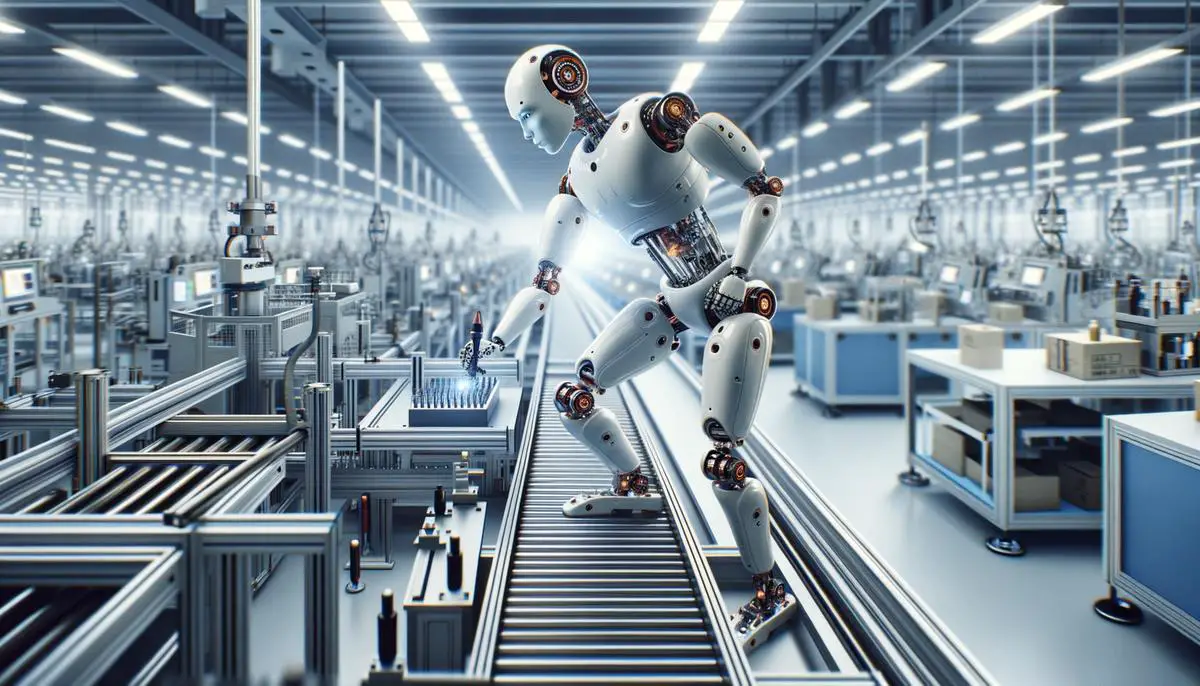Tesla's Humanoid Robot Optimus
Tesla's Optimus humanoid robot showcases impressive advancements in robotics technology. It demonstrates the ability to stand, walk, and perform precise, repetitive factory tasks. Equipped with Tesla's Autopilot software and a neural network processing input from eight cameras, Optimus can interpret and interact with its surroundings.
Elon Musk envisions a future where these humanoid workers could significantly impact the labor market, potentially outnumbering humans in the workforce and handling tedious and dangerous jobs. This could lead to a shift where physical work becomes optional for humans.
Musk predicts that Optimus could eventually surpass Tesla's automotive revenue, suggesting a world where robots become as common as smartphones or cars. While still in development, Optimus has been showcased performing tasks like:
- Yoga
- Folding laundry
- Watering plants
- Lifting items in factory settings
The societal implications of such technology are significant, raising questions about job displacement and new employment opportunities. As development continues, Optimus' role in our future remains an intriguing topic of discussion.
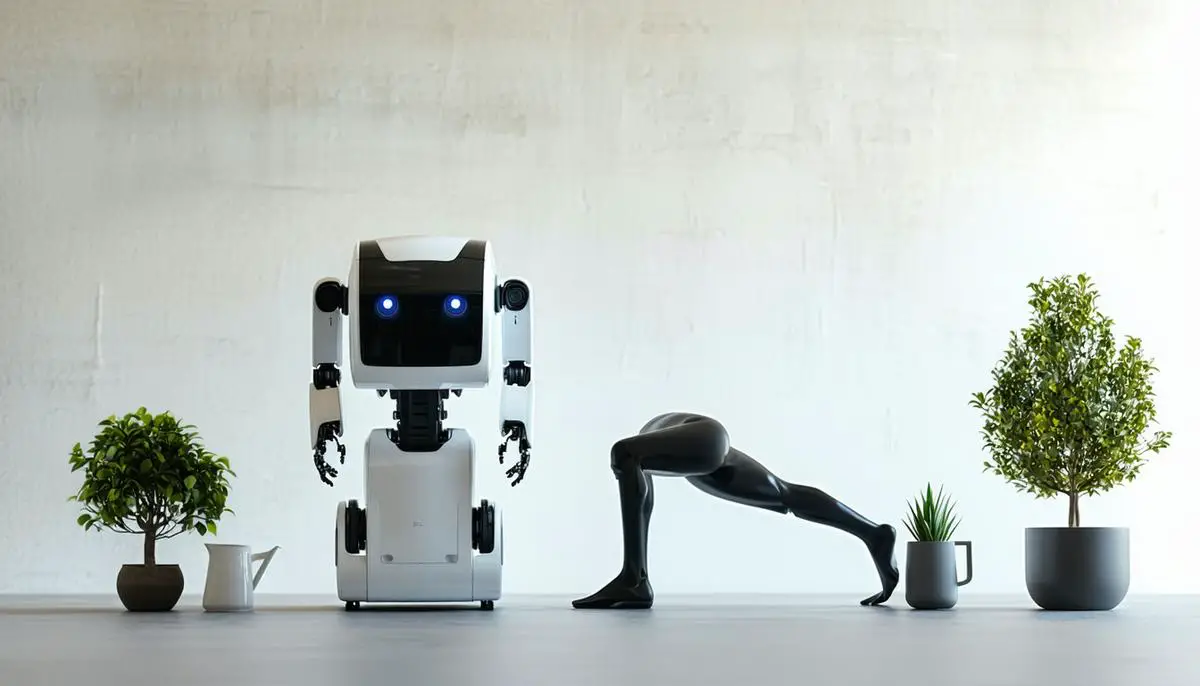
Design Controversies and Inspirations
The design of Tesla's Optimus robot has sparked discussion, particularly regarding accusations of similarities to robots in Alex Proyas' film "I, Robot." Critics note visual parallels between Tesla's humanoids and the cinematic depiction, questioning design originality.
Historically, robotics has often drawn inspiration from science fiction, which has long imagined futures shaped by technological advancements. Early cinematic portrayals, like the robots in Fritz Lang's "Metropolis," established a template for the sleek, humanoid forms associated with AI. These portrayals continue to influence public imagination and real-world innovation.
"Hey Elon, Can I have my designs back please?" – Alex Proyas
Tesla's Optimus, with its anthropomorphic form, follows a lineage of robots shaped by decades of cinematic influence. This integration of familiar aesthetic elements provides relatability, connecting viewers' sci-fi fantasies with tangible advancements in robotics.
The debate over originality and inspiration highlights an essential aspect of design evolution: innovation often builds upon previous imaginative work. This cross-pollination between fiction and reality can drive technological progress, spurred by aspirational visions from films. As technology advances, the line between inspiration and imitation remains a dynamic, complex topic.
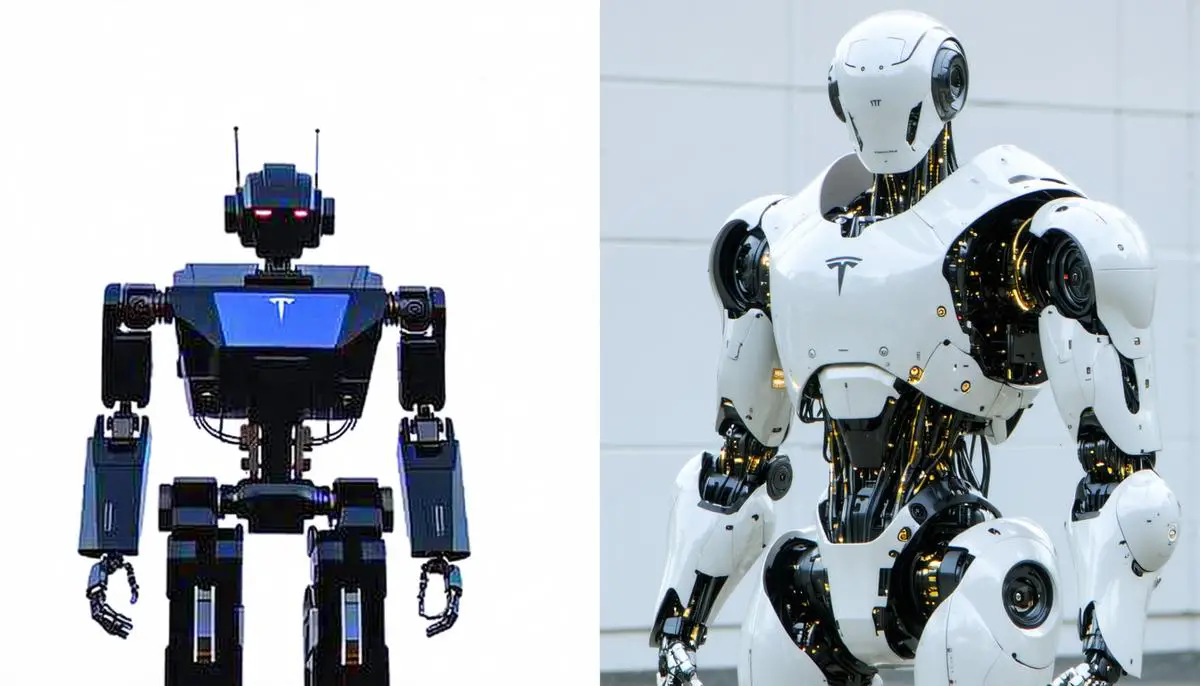
Strategic Position and Market Outlook
Tesla's strategic positioning in humanoid robotics aims to capture a significant portion of this growing market. Elon Musk envisions Tesla's robots leading a transformative shift, potentially surpassing automotive ventures as primary revenue drivers.
Tesla faces substantial competition, particularly from Chinese firms rapidly advancing in this area. China's commitment to becoming a global leader in humanoid robotics reflects a broader geopolitical strategy aimed at technological supremacy. Supported by government initiatives, Chinese companies are closing technological gaps, primarily through competitive pricing and efficient supply chains.
Tesla's innovation in humanoid robotics combines cutting-edge AI integration with strategic market positioning. By incorporating Autopilot technology into Optimus, Tesla leverages existing strengths to produce a sophisticated robotic platform. Musk's focus on scalable production and cost reduction aims to increase access to humanoid technology over time.
Key Market Projections:
- Global market for humanoid robots projected to reach $38 billion by 2035
- 250,000 humanoid units expected to be shipped for industrial use in 5 years
- Consumer purchases estimated at 1 million units annually in about a decade
As China accelerates its robotics ambitions, emerging as a significant challenger to Tesla's market position, this international competition drives innovation and potentially benefits consumers through enhanced product offerings and affordability. Tesla's strategic trajectory involves perfecting robotics technology and managing an increasingly complex competitive landscape.
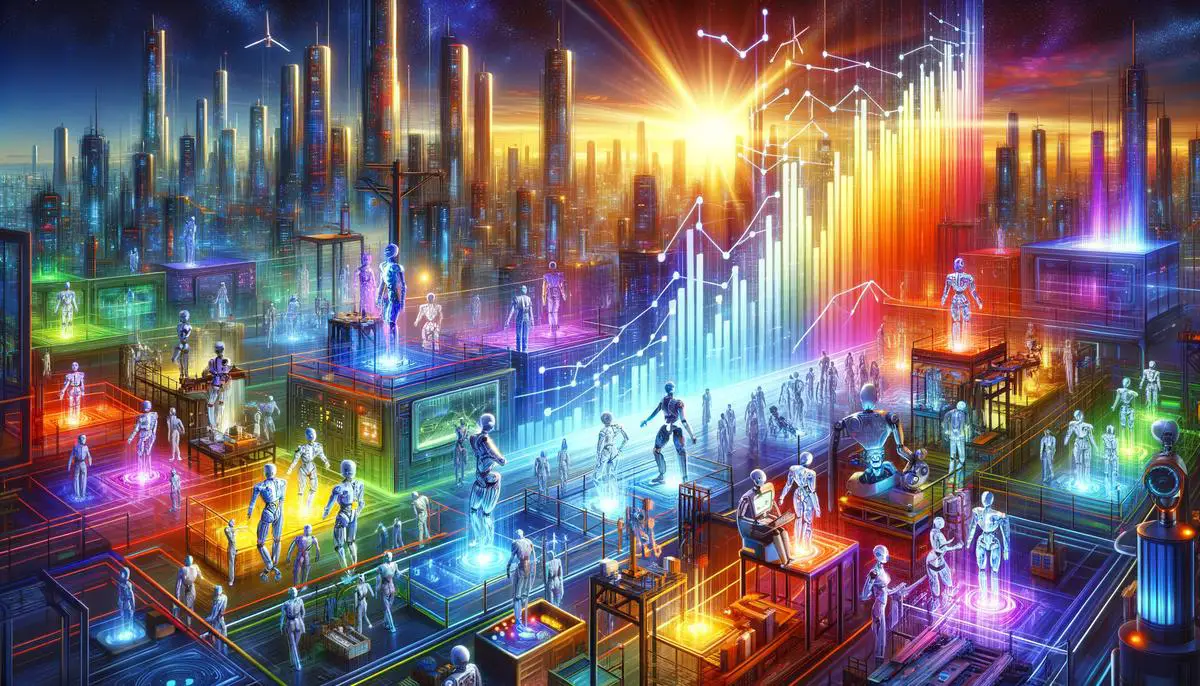
Challenges and Criticisms
Elon Musk's vision for Tesla's humanoid robot, Optimus, faces several challenges and criticisms. Industry experts, such as Jerome Pesenti, have expressed skepticism regarding the current operational and technological capabilities of such robots. Pesenti emphasizes the difficulty of implementing AI technologies in the unpredictable real world, particularly in complex home settings.
"Sometimes we have to call it what it is, right? I mean, have you seen this thing do anything? It's bulls**t." – Jerome Pesenti, former VP of AI at Meta
Tesla's Optimus is designed for tasks in controlled factory settings, aligning with insights that constrained environments are more suitable for humanoid robotics. As these robots advance, expectations often outpace the gradual progress of technological development. The evolving capabilities of Optimus show potential but also highlight the extensive work still required before widespread, versatile deployment.
Achieving the high level of autonomy and adaptability required for wide-ranging applications presents numerous challenges:
- Data processing limitations
- Machine learning constraints
- Hardware restrictions
- Adapting to unpredictable environments
The disconnect between expectation and reality in autonomous technologies frequently arises in public discourse, where rapid developments are anticipated.
While the challenges in developing fully operational humanoid robots are substantial, they also drive innovation. Addressing criticisms by enhancing sensory systems, refining AI models, and developing more robust mechanisms are steps toward tackling these formidable tasks.
Tesla must remain adaptable, continually refining its approach to balance the ambitious goals set for Optimus with the current state of AI technology. This dual approach, addressing both the advancement and realism of autonomous systems, will ultimately determine the feasibility of Musk's assertions about the future role of humanoid robots.
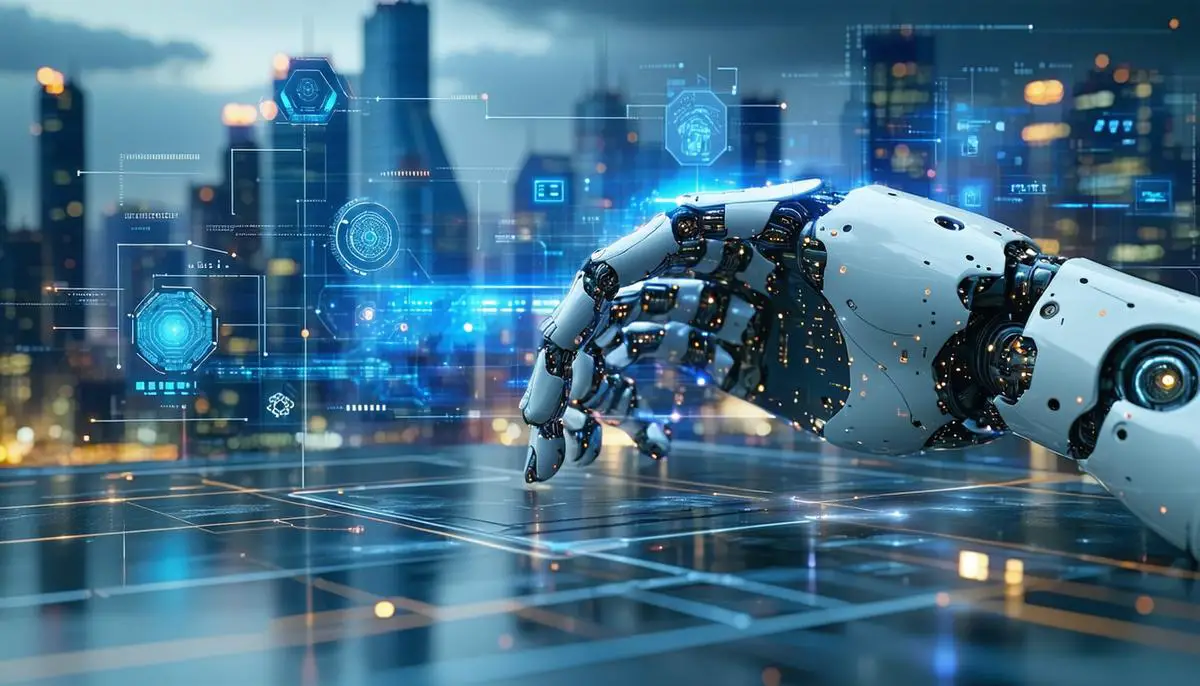
Partnerships and Collaborations with Global Entities
Tesla's strategic approach to humanoid robotics is closely linked with its collaborations and partnerships worldwide, particularly with Chinese manufacturers. These alliances are crucial to Tesla's goal of leading the humanoid robotics sector, providing access to a well-established ecosystem of technological innovation and production efficiency.
Working with Chinese manufacturers allows Tesla to leverage:
- Advanced manufacturing capabilities
- Essential components
- Cost-effective production models
This collaboration helps Tesla overcome challenges in securing high-quality components, enabling smoother and quicker development of its humanoid robotics.
The partnership between Tesla and Chinese firms highlights a broader shift in the global supply chain, where international collaboration fosters faster technological advancements. This synergy combines Western innovation with Eastern manufacturing strengths, driven by market demands for scalable and cost-effective solutions.
These collaborations contribute to the competitive dynamism of the technological landscape overall. As Chinese firms refine their processes based on feedback from global entities like Tesla, they improve their technological skills and expand their domestic capabilities, creating a cycle of innovation.
In managing this complex web of global partnerships, Tesla remains a key figure in advancing humanoid robotics. The combination of diverse skills and resources from around the world facilitates ongoing innovation, ensuring that Tesla stays at the forefront of technological advancement in the robotics industry.
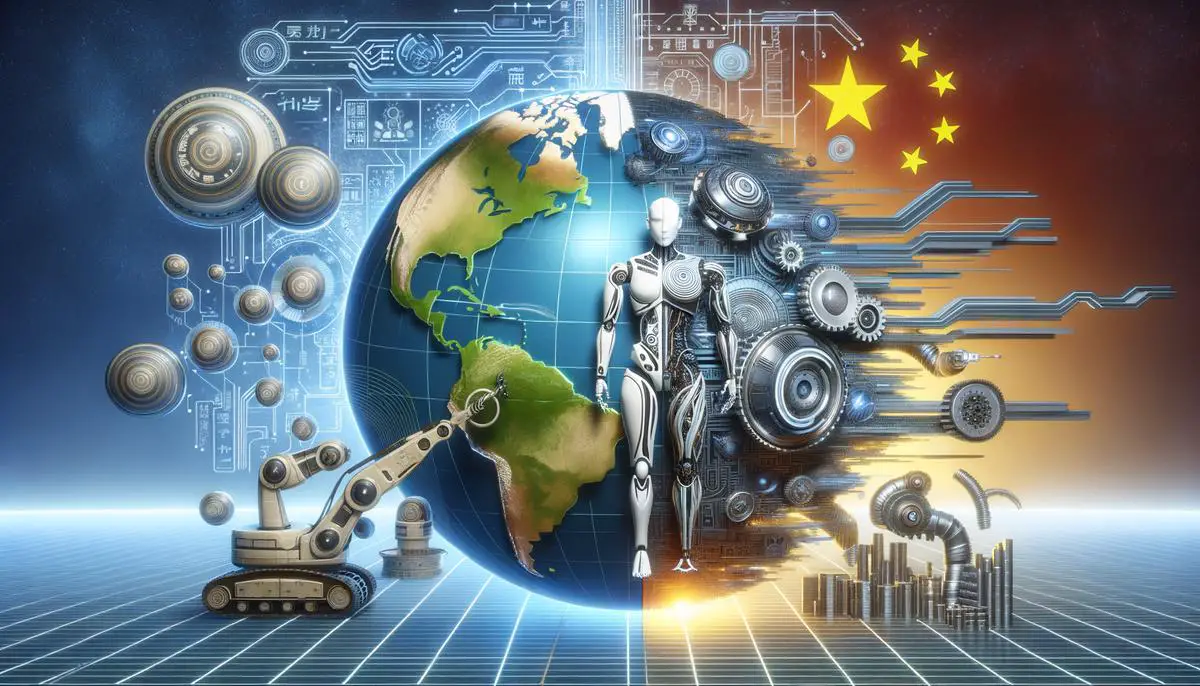
As Tesla progresses in humanoid robotics, the potential for these machines to transform our daily lives becomes increasingly apparent. Optimus represents a significant advancement, promising to redefine our interaction with technology. The journey continues, but the prospect of a future where robots integrate into both industrial and domestic environments remains an exciting area of development.
-
1. Pesenti J. Interview. Yahoo Finance Executive Editor Brian Sozzi on Opening Bid podcast.
2. Musk E. Tesla AI Day. August 19, 2021.
3. Musk E. Tesla earnings call. April 2023.
4. Goldman Sachs. Research report on humanoid robots market. 2023.
5. Zhang D. Interview. Hong Kong Polytechnic University.
6. Xi N. Interview. University of Hong Kong.
7. International Federation of Robotics. Annual report on industrial robots. 2021.
8. China Ministry of Industry and Information Technology. Policy document on humanoid robotics industry. 2023.
9. Morgan Stanley. Research report on humanoid robot supply chain. 2024.
10. Tseng PK. Interview. TrendForce.
11. Helwig B. Interview. Special Competitive Studies Project.
![]()
